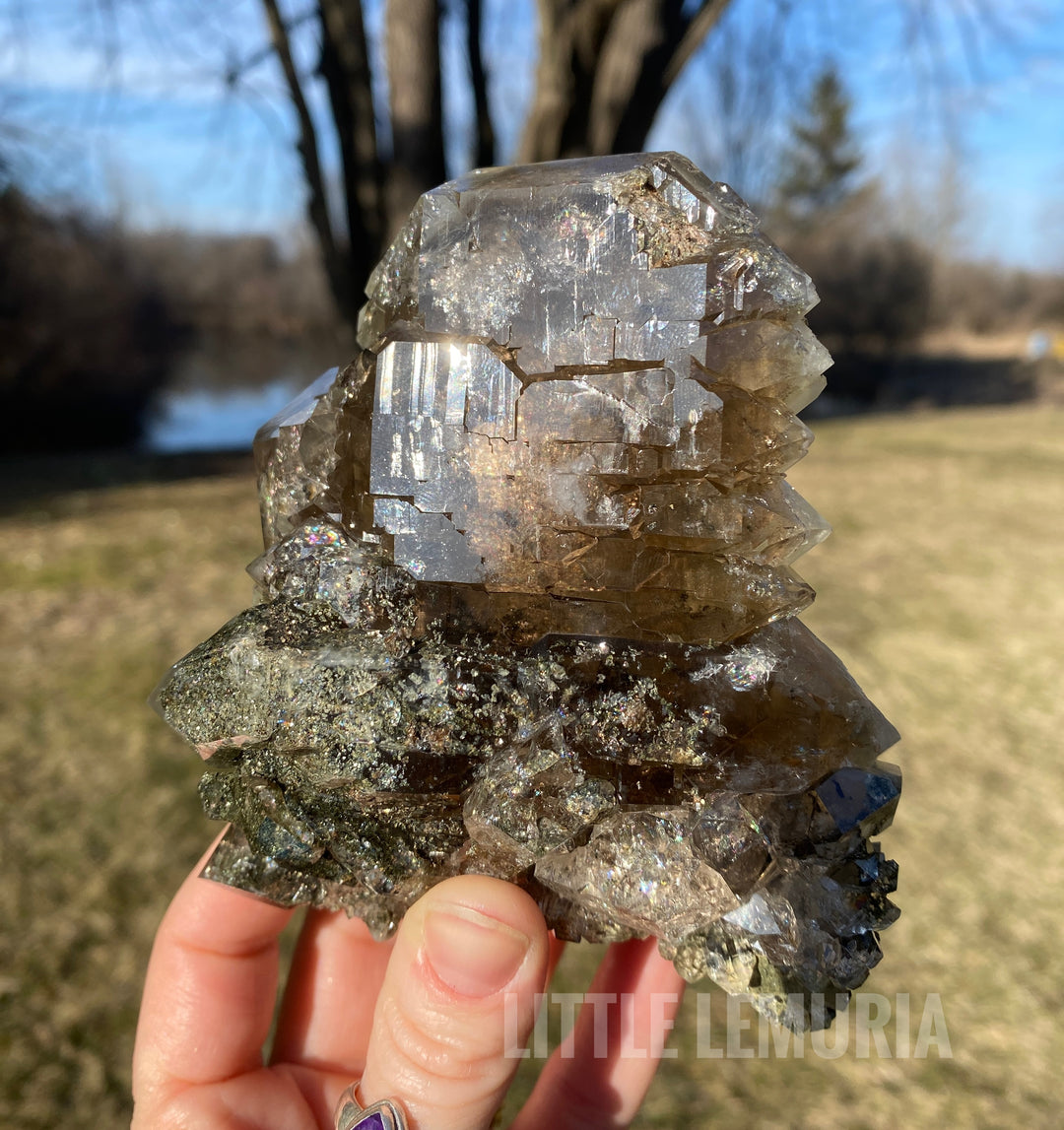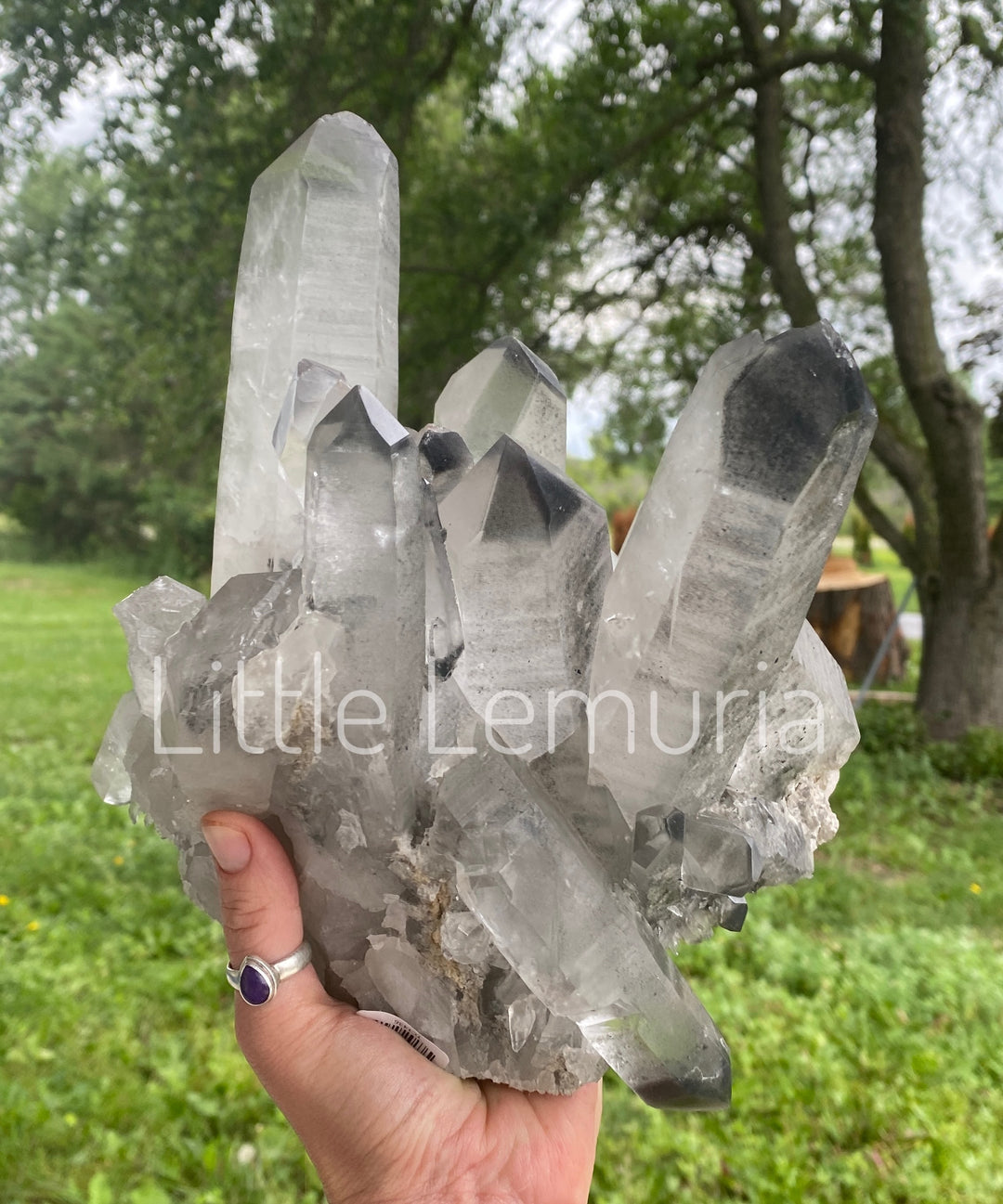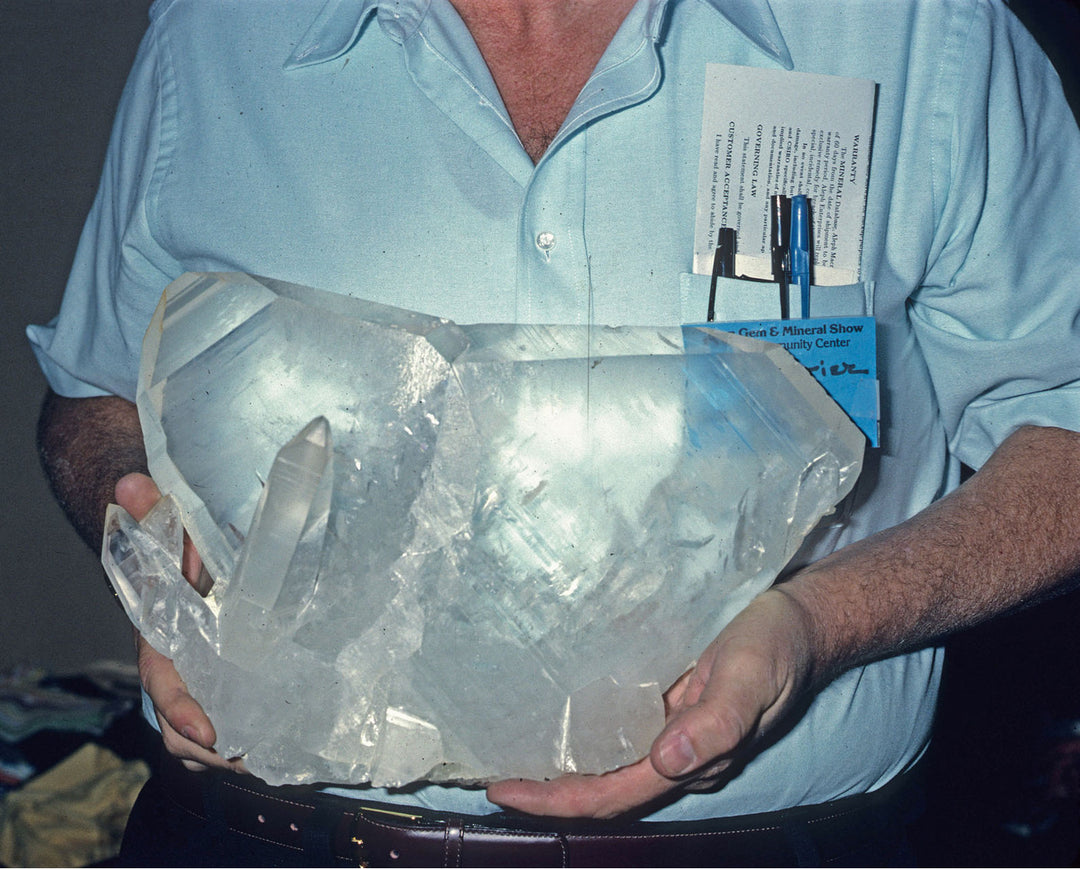What is a twin?
When I first started selling crystals, something I noticed immediately was that certain terms were very loosely defined. “Twin” was indisputably right up there at the top of the list. I would have customers regularly shouting (typing) out during our live sales, “that’s a twin!” or asking if we had any twins out on the table they could see. From what I gathered in my early days, novice collectors were defining a twin as any crystal that had another crystal stuck to it in some form or fashion. While this is all well and good, two crystals connected is more of a fun BOGO crystal but often they do not actually follow any twinning rules. To add another layer of complexity, the metaphysical crystal community has defined crystal twins in an entirely different manner unrelated to the structure of the mineral. I will touch on that towards the end of this blog.
Two or more crystals, growing together, can only be considered a twin when they are related to each other by one of the three different types of twin symmetry operations. These three operations are reflection, rotation, and inversion. This is the point in the blog where there is an enormous amount of space for more details regarding crystallography, but instead of throwing around confusing terms I am going to stick with what can be represented visually upon inspection of your own crystals (also known as the morphology of the crystal). Additionally, there are two classifications of twinned crystals, contact twins and penetration twins.
Contact twins will exhibit reflection across a mirrored plane, which would then be considered a twin plane. Japan law-twins are one of the most uncommon but memorable forms of a contact twin. It is important to note that other crystals can appear to be a paired reflection of one another, but unless the c-axis of the two crystals meets at 84.33 degrees, it is not a Japan law-twin. There is no other common twinning law where two quartz crystals can be seen as individuals. Another contact twin many readers will have in their collection is a form of gypsum known as “fish-tail selenite” this is a swallow tail twin. Calcite twins, such as many Elmwood calcite specimens, are also an example of contact twinning. All twins, regardless of their symmetry operation, share a set of points within the crystal lattice. Contact twins create a twin plane with those shared points, and intergrown twins create a twin axis with the shared points.

Rotational twins are fascinating symmetrical reflections of themselves. The Carlsbad law-twin is an excellent representation of a 2-fold (180 degree) rotational and often intergrown twin. This twin law is almost exclusively seen in feldspars. Another stunning example of a rotational twin is the “Iron Cross” or pyrite penetration twin. In this case the twin axis rotation is only 90 degrees.
The Fluorite twin-law is another example of interpenetrating growth. Fluorite twins are quite common especially in certain localities. In the Weardale England deposit, for example, nearly every specimen mined turned out to be a twin. Fluorite can also exhibit the Spinel twin-law which is a contact twin and far less common. These crystals are typically flat and share one twin plane rather than the more typical intergrowth.
Every twin discussed thus far is a growth twin. Growth twins form when an environmental change takes place and during the crystal’s growth, a new begins growing along with the original now sharing a line of symmetry within or on the face of the original crystal. To be a twin it must have an orientation different than the original crystal. The new crystal can never share an existing plane of symmetry it always adds a new plane of symmetry to the structure. This can be confusing as what is referred to as a tantric twin in the metaphysical rolodex of terms simply means two parallel crystals growing side my side and sharing a preexisting plane of symmetry. These are not true twins.
Finally, there is a separate category of twins that are called transformation twins. These are my personal favorites and often can be seen in high altitude, alpine-typical quartz. There is no simple way to describe this phenomenon so I will take a stab at it and encourage readers to continue their research on their own. One page I suggest is quartzpage.de which is an excellent resource for beginner and advanced crystal collectors. Transformation twinning occurs when heat or pressure changes and a preexisting crystal is transformed. Parts of the internal structure of the crystal shift around the stable preexisting structure and a new symmetrical intergrown crystal is formed. Yes, it is mind-blowing.
In the case of Dauphine law and Brazil law-twins, this phenomenon is caused by a decrease in temperature. The arrangement and size of the atoms making up the structure of the crystal are dependent on the pressure and temperature during its formation. An increase in pressure, for example, will cause the volume of the crystal to decrease until it finds stability. In contrast if the temperature increases the atoms may vibrate more and increase the size of the crystal. Identifying a Brazil law-twin can be as easy as inspecting your quartz for crude triangular etchings on the prismatic faces of the crystal. While this cannot tell you the orientation of the intergrown crystals, it can reliably identify it as a twin.
Now that you’re seeing double, I challenge you to evaluate your own collection and look critically at pieces you once thought were twins. Now with your discerning eye, scan your collection for pieces you might have never identified as a twin before reading this article. There is so much to learn, and many mysteries remain in the world of twinning. Despite the term twin, there is no limit to the number of twins a specimen might have. Cyclic twinning, for example, must be 3 or more twins combined. There are several twin-laws not covered here, so have fun exploring all the possibilities!
For additional information on twins visit:
http://www.tulane.edu/~sanelson/eens211/twinning.htm
Several pictures are from the twinned minerals collection of Ferdinando Giovine and are being used for educational purposes only. Other photos have come from the mindat.org archives.






